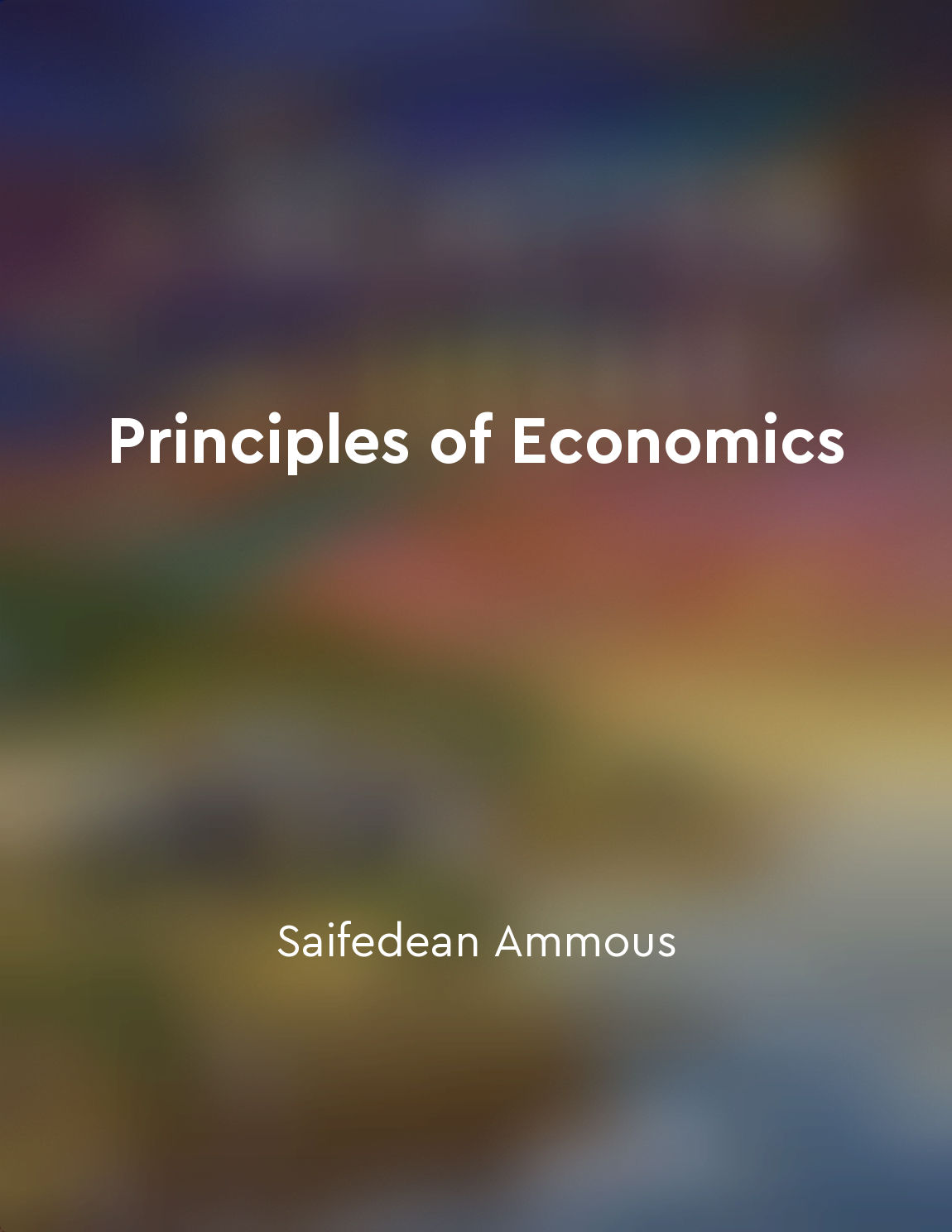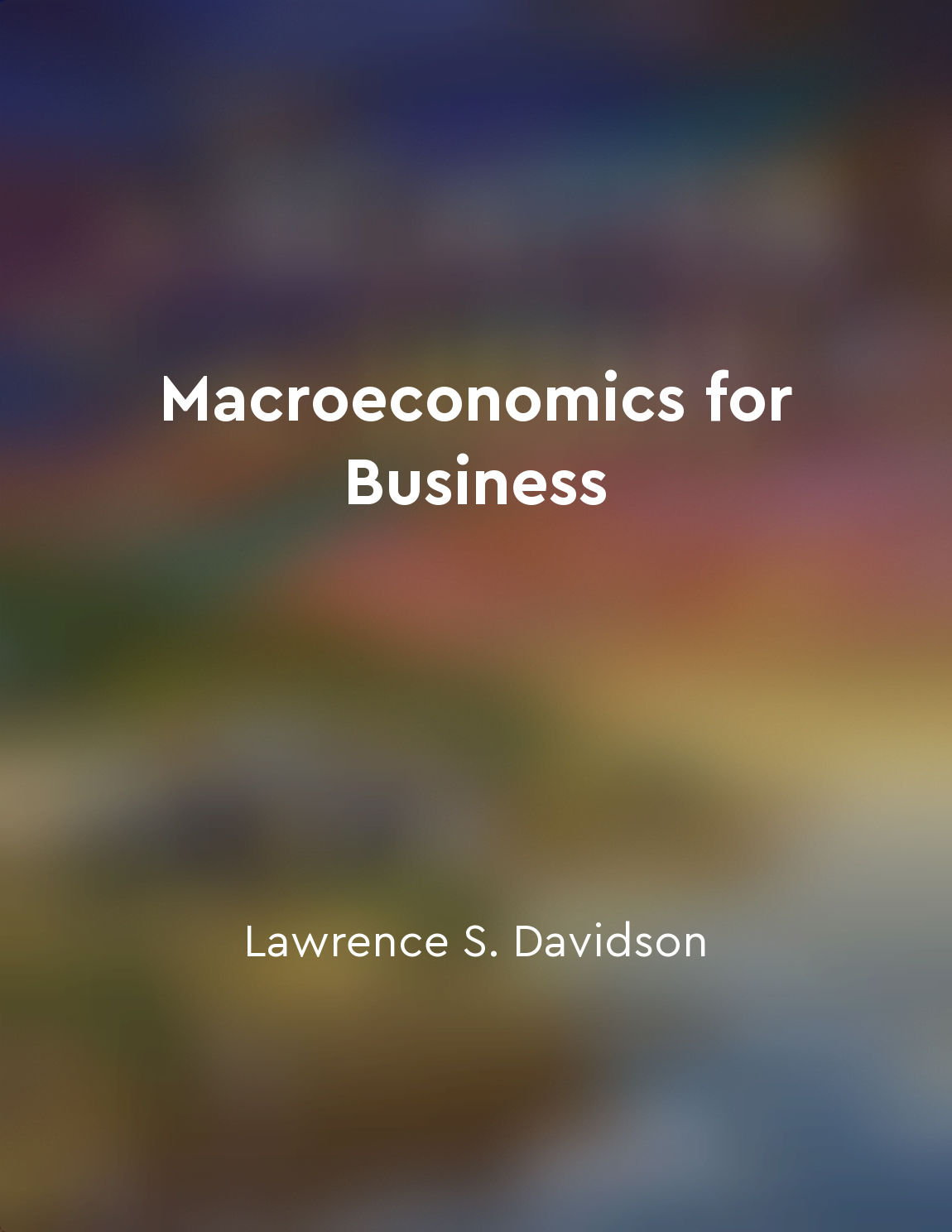Variations in the money supply can lead to booms and busts in the economy from "summary" of A Monetary History of the United States, 1867-1960 by Milton Friedman,Anna Jacobson Schwartz
The relationship between the money supply and economic booms and busts is a crucial aspect of understanding the fluctuations in the economy. Changes in the money supply can have significant effects on economic activity, leading to periods of expansion and contraction. When the money supply increases, it can fuel economic growth by providing consumers and businesses with more funds to spend and invest. This increased spending can lead to higher levels of production, job creation, and overall economic prosperity. Conversely, a decrease in the money supply can have the opposite effect, causing a contraction in economic activity. When there is less money available for spending and investment, consumers and businesses may cut back on their purchases and projects, leading to a slowdown in production, job losses, and a decline in overall economic performance. These fluctuations in economic activity can result in booms and busts, as periods of rapid expansion are often followed by periods of contraction and recession. The Federal Reserve plays a critical role in managing the money supply and influencing economic conditions. By adjusting interest rates, open market operations, and reserve requirements, the Fed can control the amount of money in circulation and guide the economy towards stability and growth. However, if the Fed misjudges the appropriate level of monetary policy or fails to respond effectively to changing economic conditions, it can inadvertently exacerbate booms and busts in the economy. Historical analysis of the United States' monetary history reveals numerous instances where variations in the money supply have led to economic booms and busts. For example, the sharp contraction in the money supply during the Great Depression exacerbated the economic downturn and prolonged the period of high unemployment and low economic growth. On the other hand, the expansionary monetary policy during the post-World War II era helped fuel the economic boom of the 1950s and 1960s.- Understanding the relationship between the money supply and economic booms and busts is essential for policymakers, economists, and investors to anticipate and respond to changing economic conditions. By monitoring and managing the money supply effectively, it is possible to mitigate the risks of excessive booms and severe busts, and foster sustainable economic growth and stability.
Similar Posts
Competition benefits consumers through lower prices and better products
Competition between businesses forces them to constantly seek ways to attract customers by offering lower prices and better pro...

Economic freedom is a fundamental human right
Economic freedom is a fundamental human right. This is a simple but profound idea that has far-reaching implications for societ...

Competition fosters innovation
The concept of competition fostering innovation is a fundamental principle in economics. When firms are faced with competition ...

Exchange rates impact global business operations
Exchange rates play a crucial role in the global business environment. They are the prices at which one country's currency can ...
Comparative advantage explains the benefits of trade
Comparative advantage is a fundamental concept in economics that helps us understand why trade is beneficial for all parties in...

Bitcoin is a tool for financial empowerment
In the world of modern finance, Bitcoin stands out as a revolutionary force that challenges the status quo and empowers individ...
Macroeconomics studies economywide phenomena
Macroeconomics is the branch of economics that deals with the overall performance of the economy. It focuses on economy-wide ph...
Government policies can mitigate the impact of business cycles
Government policies play a crucial role in managing the impact of business cycles on the economy. During periods of economic ex...
The ability to hold and transfer Bitcoin without the need for a trusted third party makes it censorshipresistant
Bitcoin's ability to be held and transferred without relying on a trusted third party is what makes it censorship-resistant. Th...

